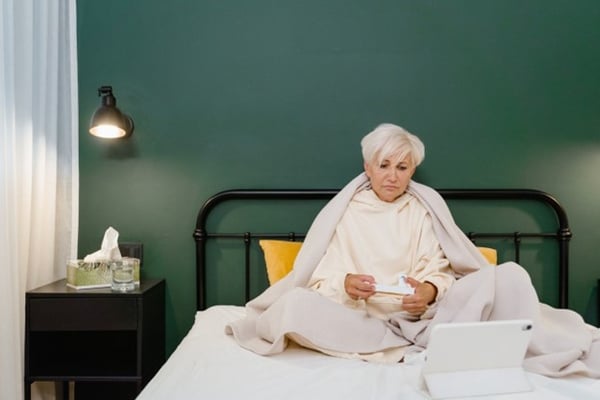
The healthcare market is changing and continuously re-shaping the day to day of healthcare workers. One change that’s starting to make waves is the Amazon effect, a phenomenon previously only experienced in retail that is now making its way into the healthcare field. Here’s what you need to know about this change and how it will affect you as a healthcare worker and traveler.
- What is "the Amazon effect"?
- How is Amazon entering the healthcare landscape?
- How are Amazon and healthcare connected?
- What does the Amazon effect have to do with healthcare travelers?
The Amazon Effect: How the Healthcare Market is Changing
What is "the Amazon effect"?
So, you know what Amazon is, but what is the Amazon effect? The Amazon effect refers to higher customer expectations created by Amazon’s implementation of same-day delivery services (Prime Now) or its generally quick shipping. Amazon has produced elevated service standards, forever changing consumer expectations and habits. These changes have forced businesses to think from a more customer-centric perspective, but it’s often difficult to compete with Amazon’s resources, systems, and processes.
As a result, consumers have come to use Amazon as a benchmark when dealing with retailers, and now healthcare. While healthcare isn’t the same as shopping retail, consumers are still taking these high expectations into their medical interactions. Consumers have learned what kind of customer experience is possible by dealing with Amazon, and they’re bringing those expectations into the healthcare sphere.
How is Amazon entering the healthcare landscape?
Amazon’s mark on the healthcare industry doesn’t stop at the Amazon effect. In addition to Amazon’s ecommerce experience raising the bar for consumers, they’re also breaking into the healthcare industry with Amazon Care, a virtual health service benefit. Amazon Care is available to all of Amazon’s U.S. employees and other employees whose employers have contracted the service from Amazon.
This service quickly connects customers in the comfort of their own homes with a healthcare professional via video chat. If the customer needs further evaluation, a nurse is dispatched to their home.
“You get instant access to a doctor via your phone or mobile device," said Kirthi Kalyanam, executive director of the Retail Management Institute at Santa Clara University in California. "And if necessary, they will send a nurse to your house. That’s the friction they’re solving and it’s a very important thing. So far the healthcare system has failed to solve that problem for us."
Although the service is only available in select states and to customers whose employer has provided the benefit, this access to care sets a new expectation in the healthcare industry. Amazon has taken the average time to schedule and see a primary doctor from 21 days, to about 60 seconds. This greatly raises the stakes for hospitals and medical practices as consumers could opt to get more healthcare services delivered remotely without leaving home.
"For the telehealth and virtual care market, this will set a bar for experience and convenience," said Nathan Ray, a director in the healthcare and life sciences practice at business and technology consulting firm West Monroe. "For others in the healthcare ecosystem, this may complement or challenge their own strategies."
How are Amazon and healthcare connected?
You may be wondering how these increased expectations translate into the healthcare industry as it is today. The Amazon effect has caused patients to want and expect 24/7 medical care to be available, and with the introduction of Amazon Care and growing telehealth services, this demand will only increase. As time goes on, medical services will more often look like a Zoom call or FaceTime with a healthcare provider.
The customer-centric model, and now a patient-centric model, from Amazon resonates with the modern patient. Patients are seeking a health system that puts them first, which includes healthcare that’s delivered on the patient’s terms and schedule. It’s important to note that Amazon healthcare has a long way to go and while it is pushing the market to change, there are other driving factors behind this demand for accessible healthcare.
For instance, the pandemic has also highlighted the need for a transformation in healthcare delivery. Prior to the pandemic, telehealth was rare and home health was generally limited to the elderly. However, in-person care has not always an option during COVID-19 surges or patients were not completely comfortable with in-person care. Telehealth and other accessible forms of healthcare had to be quickly adopted and now patients have seen what healthcare could look like and they’re expectations for quality patient care have been raised.
What does the Amazon effect have to do with healthcare travelers?
We know that patients want 24/7 access to care, but staff healthcare workers don’t want to work 24/7. This is where healthcare travelers come into the picture. Healthcare travelers are not only reducing the nursing shortage, but they can also help fill this accessibility need. Being available in the gaps permanent staff are unable to fill is yet another way travelers are in demand right now. Travelers can also expect the use of telehealth while on assignment to increase as well as an uptick in travel home health jobs. By embracing these changes, travelers can help meet these new patient expectations the Amazon effect has created.
Ready to find your next travel assignment and start filling the healthcare accessibility demand? You are essential in driving this healthcare transformation so patients can receive quality, accessible care.





